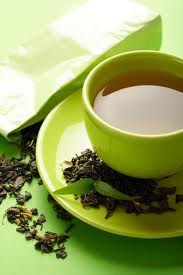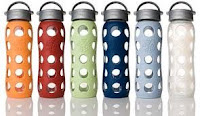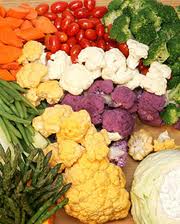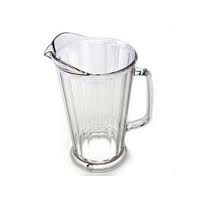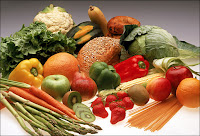We are just 13 short days away from 2012, so my question is “What do you want more of in 2012?” MORE energy, MORE time, MORE patience, MORE love, MORE health? It is tough to say no to any of those, but how do you get MORE in 2012. I believe that you get MORE in 2012 by clearing away the clutter and focusing your efforts on things that can really make a difference. How many times a month, a week, a day do you say “I should not eat this”, “I should really start eating healthier”, or quite possibly “I should really start working out”. Getting MORE in 2012 could be yours if you stop talking about what you should do and start doing it. There is no better time than right now to start focusing on your health and the health of your family. Being too busy or tired cannot be your excuse because you are not going to be any less busy in a week, a month, a year, and you certainly are not going to feel less tired unless you focus on your health.
Scientific studies continue to demonstrate that among all lifestyle factors, no single factor is more important to our health than the food we eat. The World Health Organization recently noted that by 2020, and for the first time in history, non-communicable chronic preventable diseases such as obesity, heart disease, diabetes, and cancer will constitute more than half of all diseases on a worldwide basis. This means that over half of the diseases are preventable through lifestyle changes such as the food we eat and exercise. If this is not motivation enough for you to make a change, then maybe some facts about the cost of an unhealthy lifestyle will motivate you. Healthcare costs have risen from $3,468 per person in 1993 to $8,160 in 2008, and costs continue to rise. It is estimated that in the next 5 years healthcare costs will rise 50% to $13,100. These costs would make sense if we were actually getting healthier, but sadly, we are just treating diseases with all of this money and are far less healthy. To lower your own healthcare cost, you must focus on health promotion and disease prevention.
We have become a nation addicted to foods high in sugar, salt, and fat, to foods of convenience rather than health. Each year, the average American consumes 600 cans (56 gallons) of soda, 150 hamburgers, 200 orders of French-fries, 175 pounds of sugar, and 180 pounds of meat. We purchase, on average, 125 take-out meals each year. Even more concerning, 90% of foods Americans purchase every year are processed foods lacking in essential vitamins, minerals, fiber, and antioxidants; In 1940, this statistic was only 10%. The number of people eating five servings of fruits and vegetables declined in the last 18 years from 42% to 26%, even as fruits and vegetables are more readily available year-around.
Nutrient-poor processed foods are overly refined, overly stimulating foods, which are not satisfying because they are lacking in fiber, vitamins, minerals, and the plethora of phytonutrients found in unprocessed foods. These “foods” are rich in sugar, salt, fat, and often cause us to unknowingly consume more calories than our bodies require. Because these products contain so little of the nutrients our bodies’ need, these unhealthy foods are not only addictive but harmful, causing undernourishment and nutrient deficiencies that, over time, damage our bodies and impair our health. They are the primary cause of low energy, insomnia, fatigue, and poor memory, shortly followed by insulin resistance and unwanted weight gain, leading to obesity and all the chronic preventable diseases that plague us, including type 2-diabetes, cardiovascular disease, and some cancers.
The good news is that healthy foods do not necessarily have to cost more than their unhealthy counterparts; in fact, a review of data by the USDA published in 2008 found that refined grains, added sugars, added fats, and processed foods were not the way to go in developing a low-cost, yet still nourishing food plan. The only way for the meal to remain both nourishing and low-cost was to emphasize nutrient-rich foods such as fruits, vegetables, beans, and whole grains. The USDA found that the strategy used to keep food costs down at the level of 10% of earnings was none other than nutrient-richness (determined by comparing the number and amount of nutrients a food contains in relationship to its caloric content). The USDA researchers concluded that “For many American households, achieving an affordable healthy diet will require moving nutrient-dense foods, such as fruits and vegetables, to the center of their plates and budgets.” My grocery store tour is the best way to learn how to get the most for your dollar in any market. Contact me to set-up a grocery store tour by yourself of with a group of friends.
If the cost of healthy food is not your main concern, then I would bet that it is TIME. You may say, “I barely have time to get food on the table, I certainly cannot spend time making food that starts with whole, fresh ingredients like vegetables, grains, etc.” I can assure you that healthy and delicious food does not have to be complicated and you CAN get fresh nourishing food on the table just as quickly as you can go pick-up dinner or toss together a processed pre-packaged meal. The very best way to start your transition to a healthier lifestyle is by allowing me to come into your home and share techniques such as meal planning, having the right ingredients, and quick and healthy cooking methods. You do not have to love to cook; you just have to have the right information and the desire that you and your family live a healthier lifestyle.
If the cost of healthy food is not your main concern, then I would bet that it is TIME. You may say, “I barely have time to get food on the table, I certainly cannot spend time making food that starts with whole, fresh ingredients like vegetables, grains, etc.” I can assure you that healthy and delicious food does not have to be complicated and you CAN get fresh nourishing food on the table just as quickly as you can go pick-up dinner or toss together a processed pre-packaged meal. The very best way to start your transition to a healthier lifestyle is by allowing me to come into your home and share techniques such as meal planning, having the right ingredients, and quick and healthy cooking methods. You do not have to love to cook; you just have to have the right information and the desire that you and your family live a healthier lifestyle.
Is your MORE in 2012 that you want your kids to eat MORE healthy foods? I hear multiple times a week that people would be happy to cook more often if my family would eat it. I specialize in getting kids to eat more healthy foods, such as fruits, veggies, and whole grains. By addressing the food aversions you are not going to create food issues, in fact by NOT addressing the problem you are allowing food issues to grow. I can walk your family through every step of the process, from introducing the change to your kids, the right words to use, what foods to prepare, as well as educating the entire family on health and fitness. For the first time in history, our children will have a shorter lifespan than we do, which of course is caused primarily by “kid food” diet that so many children are now consuming as well as a significant decrease in levels of physical activity. Your children do not have to be victims of the epidemic – let me help you make a change and get MORE in 2012.
We have talked in great deal about the food part of the equations, but let us not forget two other very important pieces to a healthy lifestyle – exercise and plenty of sleep. Are you getting the minimum level of physical activity required for your health? For an adult, you should be getting at least 150 minutes of physical activity at a moderate intensity every week. If you want to lose weight, increase muscle strength, improve your cardiovascular function, you should work toward 250 minutes per week. The key to exercise is that you get out of it what you put into it. If you do the same old workout at the same old intensity just to check the box, you are going to continue to get the same old results. If you want MORE RESULTS in 2012, let me come into your home for a FREE Personal Training Trial session. In one session your will experience cardio, strength, flexibility and burn more calories during and after your workout. Since I come to you, time, motivation, how you look, etc. can no longer be the excuse. My personal training clients continue to tell me that they not only look and feel great and have tons of energy, but they have achieved an unexpected benefit from the workouts – extreme mental clarity. Do you want MORE energy, MORE health, and MORE mental clarity in 2012? Contact me so you can stop saying “I should” and say “I DID”!
2012 is your year to achieve the health and fitness that you and your family deserve. In the New Year be a little selfish and put your health and that of your family’s on top of the priority list!
Here’s to MORE in 2012!
Aimee
References:
DeVol R and Bedroussian A. An unhealthy America: the economic burden of chronic disease. Executive summary and research findings. 2007, The Milken Institute, Santa Monica, California.
WHFoods Website by George Mateljan
Golan E, Steward H, Kuchler F et al. Can Low-Income Americans Afford a Healthy Diet? Amber Waves. U.S. Department of Agriculture, Washington, D.C. 2008, 6(5): 26-34
King, DE, Mainous, AG, Carnemolla, M, et al. Adherence to Healthy Lifestyle Habits in USA Habits,Am. J. Medicine (2009) June 122(6),528-534.
Wang Y, Beydoun MA, Liang L, et al. Will All Americans Become Overweight or Obese? Estimating the Progression and Cost of the US Obesity Epidemic. Obesity (2008) 16 10, 2323-2330.
Willett WC, Koplan JP, Nugent R, et al. Prevention of Chronic Disease by Means of Diet and Lifestyle Changes. Chapter 44 in: Disease Control Priorities in Developing Countries (2nd Edition). Jamison DT, Breman LG, Measham AR et al, Eds. Disease Control Priorities Project, Washington, D.C., April 2006.
World Health Organization. Diet, nutrition and the prevention of chronic diseases. Report of a Joint WHO/FAO Expert Consultation, 2003 WHO Technical Report Series 916, WHO Geneva.
WHAT'S FOR DINNER?
Here is a fantastic quick and easy dinner for any night of the week. A big warm bowl of chili topped with some delicious avocado, cheese, and baked chips will make the whole family happy.
Healthy Buffalo Chili
Servings: 8-12
Ingredients:
1 T olive oil
1 lb. 96% lean ground buffalo
1 medium sweet onion, sliced
2 t garlic, chopped
1 14.5 oz. can tomato sauce
1 14.5 oz. can fire-roasted diced tomatoes
1 14.5 oz. can fire-roasted crushed tomatoes
1 15 oz. can black beans, rinsed and drained
1 15 oz. can pinto beans, rinsed and drained
5 T chili powder
2 T ground cumin
Coarse sea salt and freshly ground black pepper, to taste
Baked tortilla chips
Optional toppings: grated cheddar cheese, chopped onions, light sour cream or greek yogurt, sliced avocado
Directions:
Heat a large chef pan or stock pot over medium high heat. Add olive oil and raw buffalo, stir to break meat apart and cook until no longer pink. Add the diced onion and cook about a minute. add the garlic and cook an additional minute. Add the remaining ingredients, stir together, and simmer about 20 minutes. Taste and adjust seasoning. Top each bowl of chili with optional toppings and serve with baked tortilla chips.
Tips:
This chili gets even more flavorful in the 2nd and 3rd day after cooking, making it perfect for an additional meal later int he week. You could make a burrito, nachos, or top a baked potato for a delicious healthy meal. It also freezes beautifully, so make a double batch and freeze it for one of the crazy nights when there is no time to cook.
Here's to fresh, fast, and fantastic food!
References:
DeVol R and Bedroussian A. An unhealthy America: the economic burden of chronic disease. Executive summary and research findings. 2007, The Milken Institute, Santa Monica, California.
WHFoods Website by George Mateljan
Golan E, Steward H, Kuchler F et al. Can Low-Income Americans Afford a Healthy Diet? Amber Waves. U.S. Department of Agriculture, Washington, D.C. 2008, 6(5): 26-34
King, DE, Mainous, AG, Carnemolla, M, et al. Adherence to Healthy Lifestyle Habits in USA Habits,Am. J. Medicine (2009) June 122(6),528-534.
Wang Y, Beydoun MA, Liang L, et al. Will All Americans Become Overweight or Obese? Estimating the Progression and Cost of the US Obesity Epidemic. Obesity (2008) 16 10, 2323-2330.
Willett WC, Koplan JP, Nugent R, et al. Prevention of Chronic Disease by Means of Diet and Lifestyle Changes. Chapter 44 in: Disease Control Priorities in Developing Countries (2nd Edition). Jamison DT, Breman LG, Measham AR et al, Eds. Disease Control Priorities Project, Washington, D.C., April 2006.
World Health Organization. Diet, nutrition and the prevention of chronic diseases. Report of a Joint WHO/FAO Expert Consultation, 2003 WHO Technical Report Series 916, WHO Geneva.
WHAT'S FOR DINNER?
Here is a fantastic quick and easy dinner for any night of the week. A big warm bowl of chili topped with some delicious avocado, cheese, and baked chips will make the whole family happy.
Healthy Buffalo Chili
Servings: 8-12
Ingredients:
1 T olive oil
1 lb. 96% lean ground buffalo
1 medium sweet onion, sliced
2 t garlic, chopped
1 14.5 oz. can tomato sauce
1 14.5 oz. can fire-roasted diced tomatoes
1 14.5 oz. can fire-roasted crushed tomatoes
1 15 oz. can black beans, rinsed and drained
1 15 oz. can pinto beans, rinsed and drained
5 T chili powder
2 T ground cumin
Coarse sea salt and freshly ground black pepper, to taste
Baked tortilla chips
Optional toppings: grated cheddar cheese, chopped onions, light sour cream or greek yogurt, sliced avocado
Directions:
Heat a large chef pan or stock pot over medium high heat. Add olive oil and raw buffalo, stir to break meat apart and cook until no longer pink. Add the diced onion and cook about a minute. add the garlic and cook an additional minute. Add the remaining ingredients, stir together, and simmer about 20 minutes. Taste and adjust seasoning. Top each bowl of chili with optional toppings and serve with baked tortilla chips.
Tips:
This chili gets even more flavorful in the 2nd and 3rd day after cooking, making it perfect for an additional meal later int he week. You could make a burrito, nachos, or top a baked potato for a delicious healthy meal. It also freezes beautifully, so make a double batch and freeze it for one of the crazy nights when there is no time to cook.
Here's to fresh, fast, and fantastic food!



